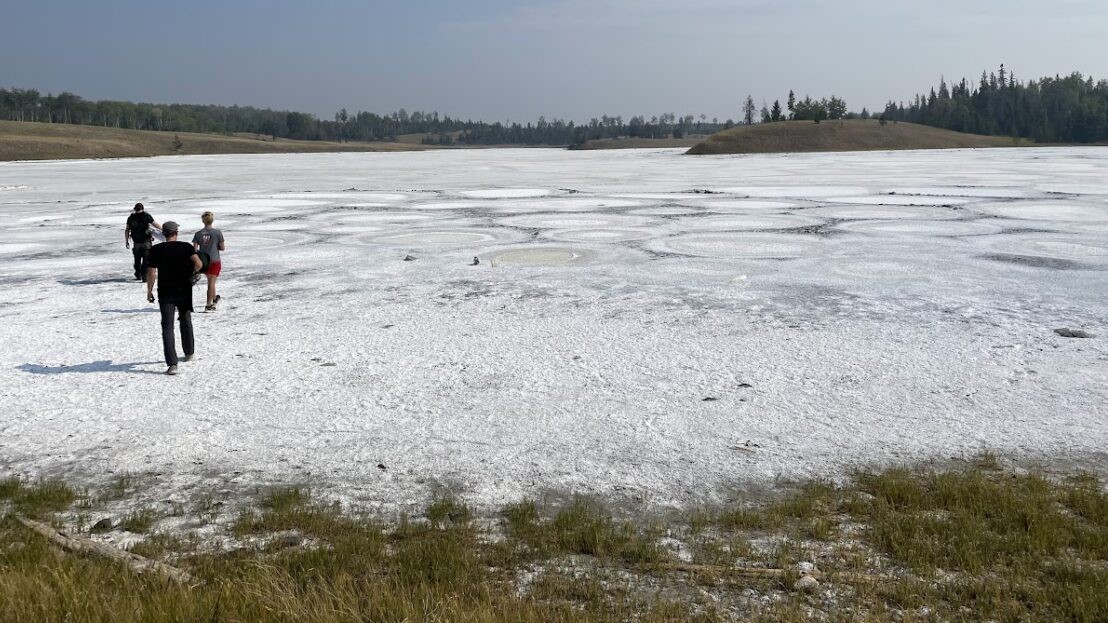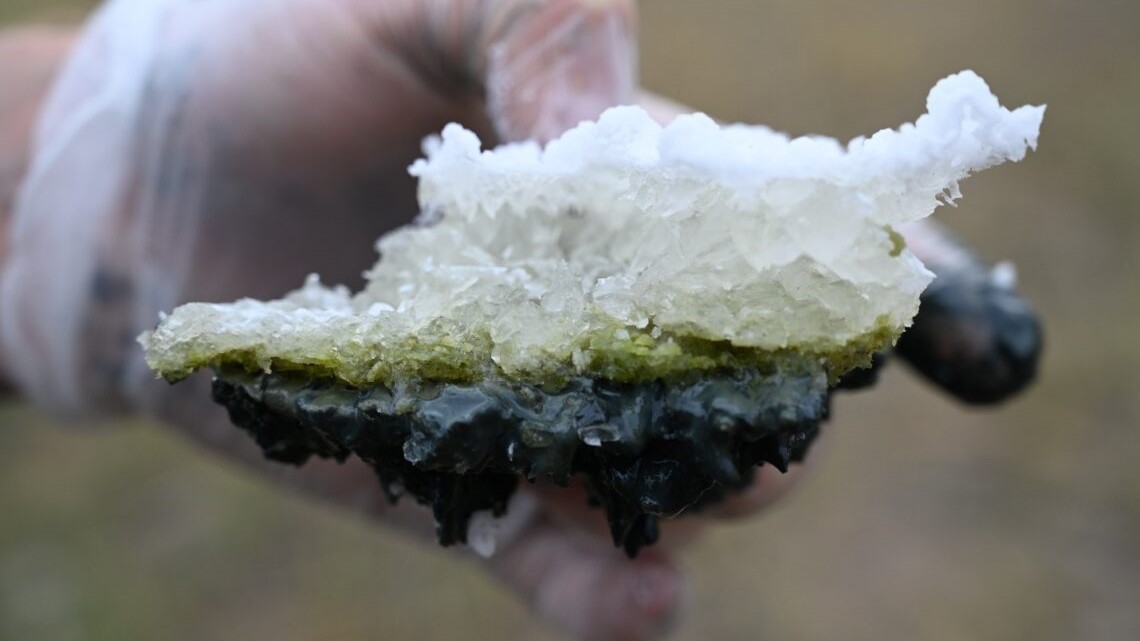Last Chance Lake: The unusual 'soda lake' with conditions that may have given rise to life on Earth
Scientists consider Last Chance Lake to be an analog for lakes that may have existed on Earth 4 billion years ago and contained the ingredients for early life on our planet.

Name: Last Chance Lake
Location: British Columbia, Canada
Coordinates: 51.32769655502273, -121.63335524817583
Why it's incredible: The lake's chemistry resembles conditions that may have given rise to life on Earth.
Last Chance Lake is a shallow, extremely salty pool of water with an unusual chemistry. The lake has phosphate concentrations 1,000 times higher than the ocean, making it a modern analog for conditions that may have given rise to life on Earth roughly 4 billion years ago.
Phosphate is an essential ingredient to make nucleotides — the building blocks of DNA and RNA — and other life-forming compounds, such as lipids. Although phosphate is bound up in every living being, the element by itself is scarce in nature.
"Someone coined the phrase 'the phosphate problem' for the origin of life, which is that you need a lot of phosphate for these reactions," Sebastian Haas, a postdoctoral researcher in the Department of Earth and Space Sciences at the University of Washington, told Live Science. "The second part of the problem is that phosphate is usually low in the environment, and the only real exception we know are these kinds of lakes."
Related: 'This is weird': Experts 'shocked' by record-breaking longevity of Death Valley's phantom lake
Last Chance Lake is one of several so-called "soda lakes" — lakes that have high levels of dissolved sodium and carbonate. That makes them similar to bowls of water containing large amounts of dissolved baking soda, hence the name. This chemical makeup enables these lakes to have high concentrations of phosphate.
In freshwater lakes, phosphate scarcely exists by itself because it binds to calcium to form calcium phosphate — an insoluble material. But in soda lakes calcium preferentially binds with carbonate and magnesium, freeing up phosphate.
"The high carbonate is sort of the key for the high phosphate in these lakes," said Haas, who led research into Last Chance Lake and neighboring Goodenough Lake for a study published in 2024 in the journal Communications Earth and Environment.

This high carbonate level, together with high sodium, results from a reaction between groundwater and volcanic rocks that sit beneath the lake, Haas said.
Get the world’s most fascinating discoveries delivered straight to your inbox.
Last Chance Lake is particularly intriguing because it has the highest phosphate concentration of all known soda lakes. It's also much saltier, which makes it hard for life to exist there compared with other soda lakes, Haas said. The largest organisms his team recorded at the lake were brine flies (Ephydridae) and brine shrimp (Artemia), he said.
Last Chance Lake formed after the last ice age, which ended about 10,000 years ago, Haas said. Radiocarbon dating indicated the lake is at least 3,300 years old and fed only by tiny amounts of springwater and groundwater. Low input and high evaporation rates concentrate salts, including carbonate, in the lake's waters.
The harsh conditions at Last Chance Lake mimic an environment on early Earth where life may have originated. "We're definitely not claiming that life emerged at Last Chance Lake," Haas said. But "a similar lake may have plausibly existed 4 billion years ago somewhere on Earth, and we're using Last Chance Lake to understand what this environment would have looked like."
Billions of years ago, similar lakes may also have existed on other planets in our solar system, including Mars, according to the study.
Discover more incredible places, where we highlight the fantastic history and science behind some of the most dramatic landscapes on Earth.

Sascha is a U.K.-based staff writer at Live Science. She holds a bachelor’s degree in biology from the University of Southampton in England and a master’s degree in science communication from Imperial College London. Her work has appeared in The Guardian and the health website Zoe. Besides writing, she enjoys playing tennis, bread-making and browsing second-hand shops for hidden gems.


